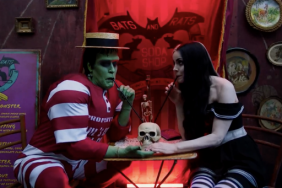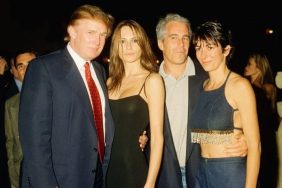
CraveOnline: Did you have to avoid the sort of Boogie Nights idea of the ‘70s porn industry?
Rob Epstein: Well, Boogie Nights is such a brilliant, masterful film and we consider a masterpiece, but this is a whole other animal. We knew we were making a very different kind of movie.
Jeffrey Friedman: We’re certainly inspired by Boogie Nights and daunted by it, but it’s a different kind of story. This is a woman’s story and in some ways tonally it’s not that different.
Rob Epstein: Because Boogie Nights goes dark also.
Jeffrey Friedman: But I think the way we structure it and the way we go there is different.
How did you get that saturated, ‘70s grain look?
Rob Epstein: We shot in Super 16mm which we wanted to shoot in Super 16 precisely for that notion that you just articulated. We also felt it would give it more of a documentary feel, documentary quality, but our incredible DP, Eric Edwards, we loved his work from My Own Private Idaho and To Die For, early Gus Van Sant films. We toyed with the idea of shooting digital but ultimately decided that Super 16 would serve the period better.
Can you not get that kind of grain from 35mm?
Rob Epstein: Well, 16 was a little cheaper and it allowed us to be more mobile because we only had 25 shooting days and we had to move really fast.
Jeffrey Friedman: But you get more grain from 16 for sure because you have to blow it up. 35 is pretty clean these days, the new film stocks. Even 16 is pretty clean but blowing it up helps to bring out the grain. And you can shoot digitally and add film look, you can add grain but it never looks authentic.
Why was it important to put Amanda in the “Donahue” segment and not use the archival material on that?
Jeffrey Friedman: Well, because you’re invested in Linda as you’ve come to know her played by Amanda. So you wanted to see her go through that transformation. It would have been interesting but I don’t think emotionally it would have carried through as well.
Is it word for word what she said in that broadcast?
Rob Epstein: Almost, almost. Some of it is an amalgamation from other interviews she did.
As you were developing this for the three years you were involved, what was your experience with the preconceived notions people, public or industry, might have had about a Linda Lovelace film?
Rob Epstein: Well, I think people really didn’t know Linda Lovelace. I think she’d been caricatured and I think that’s why she felt like she had such a struggle in her life because she was just this kind of cartoon character. We wanted to just make her as human as possible with all of her life changes and contradictions that we all live through in our lifetimes.
How hard was the casting of Harry Reems?
Rob Epstein: Well, I actually wasn’t that familiar with Adam’s work until he was presented to us as a candidate for Harry, and then we looked at his films and saw his range and his impeccable comic timing. He’s a great comedic actor and also just kind of has a soulfulness to him so he brought so much to a pretty small part, but it’s a key part. It really anchors that part of the film. Adam’s terrific.
100 minutes is a rather lean running time for a biography. Was it important that you stick to a certain period and the relatively immediate aftermath?
Rob Epstein: Well, we had 25 shooting days so that kind of defined our universe. Also, our documentary film background, we’re used to working in three act structure stories in a 90 minute timeframe so that just seemed like the right amount of time with which we could tell the story.
Jeffrey Friedman: And yes, we wanted to do a finite period and we didn’t want to do childhood to death. We wanted to take this period where she got into porn and out of porn and into and out of this relationship. The heart of the movie is really the relationship between Linda and Chuck and Linda and her family. We found what we thought was the most intense and dramatic period to dramatize.
Have either of you been familiar with the documentary Inside Deep Throat?
Rob Epstein: Oh yeah, very familiar with it and have high regard for it. It was very helpful for us in our research.
Was there anything in particular in that movie that was illuminating?
Rob Epstein: Well, there were some interviews with Linda and also her friend Patsy who’s a character in our movie. There were certain moments that just helped us inform our characterization of those characters.
Jeffrey Friedman: And of course the phenomenon of Deep Throat which that movie [covered].
When did you each experience the original Deep Throat either as viewers or filmmakers?
Jeffrey Friedman: During the making of this film. When we started working on the film, that’s when I watched it.
Rob Epstein: Yeah, I was a little too young to encounter it when it first came out, but I was aware of it. I was certainly aware of the phenomenon but didn’t really know the particulars.
Fred Topel is a staff writer at CraveOnline and the man behind Shelf Space Weekly. Follow him on Twitter at @FredTopel.





